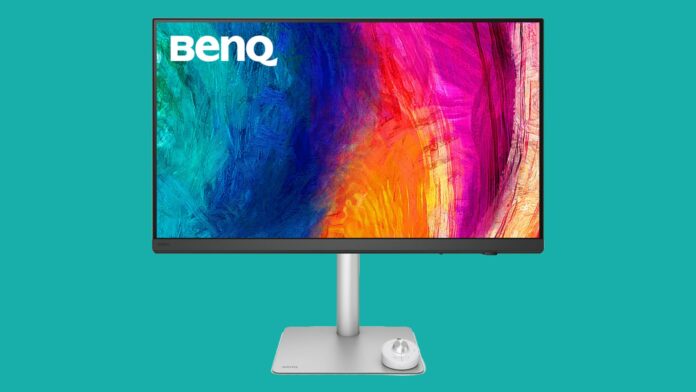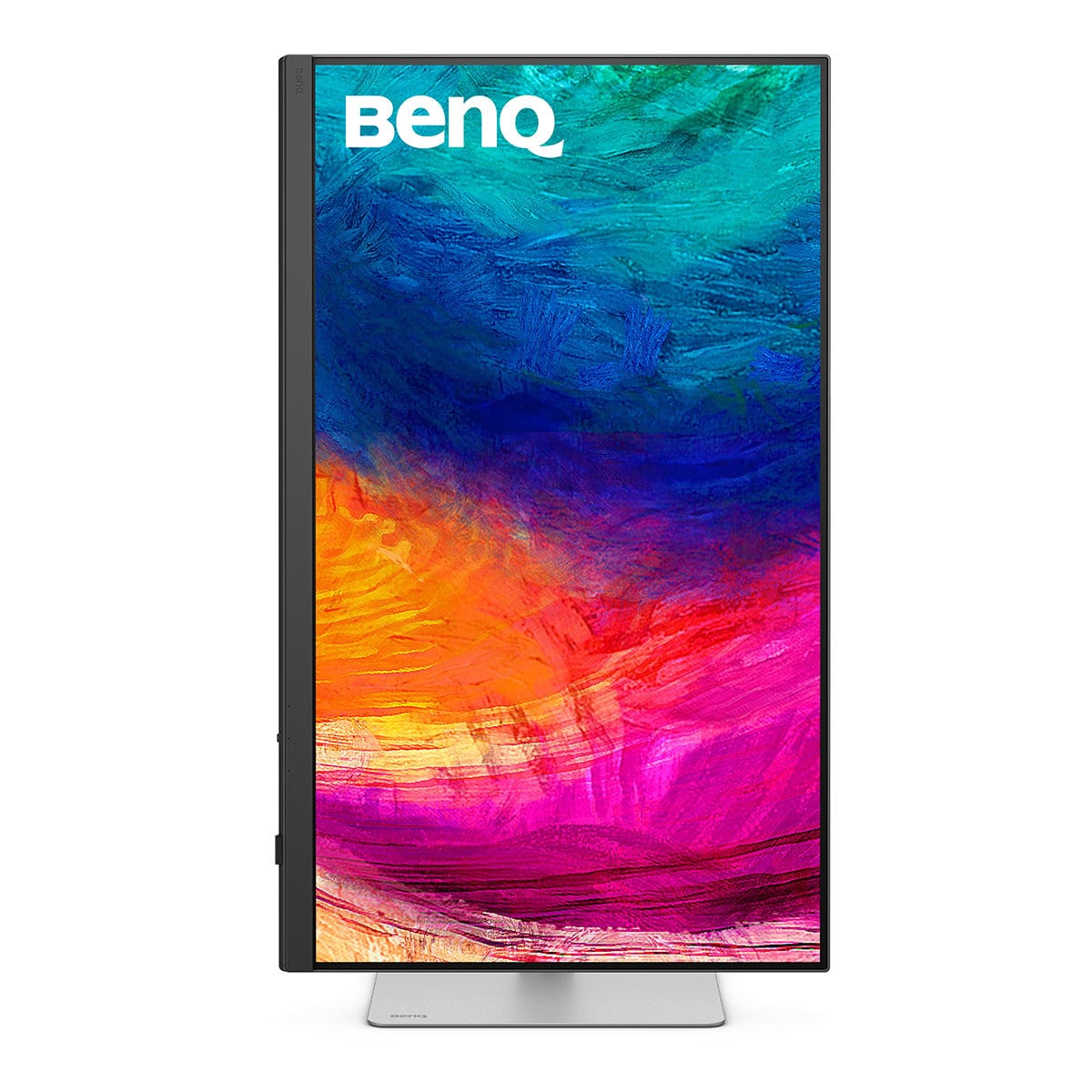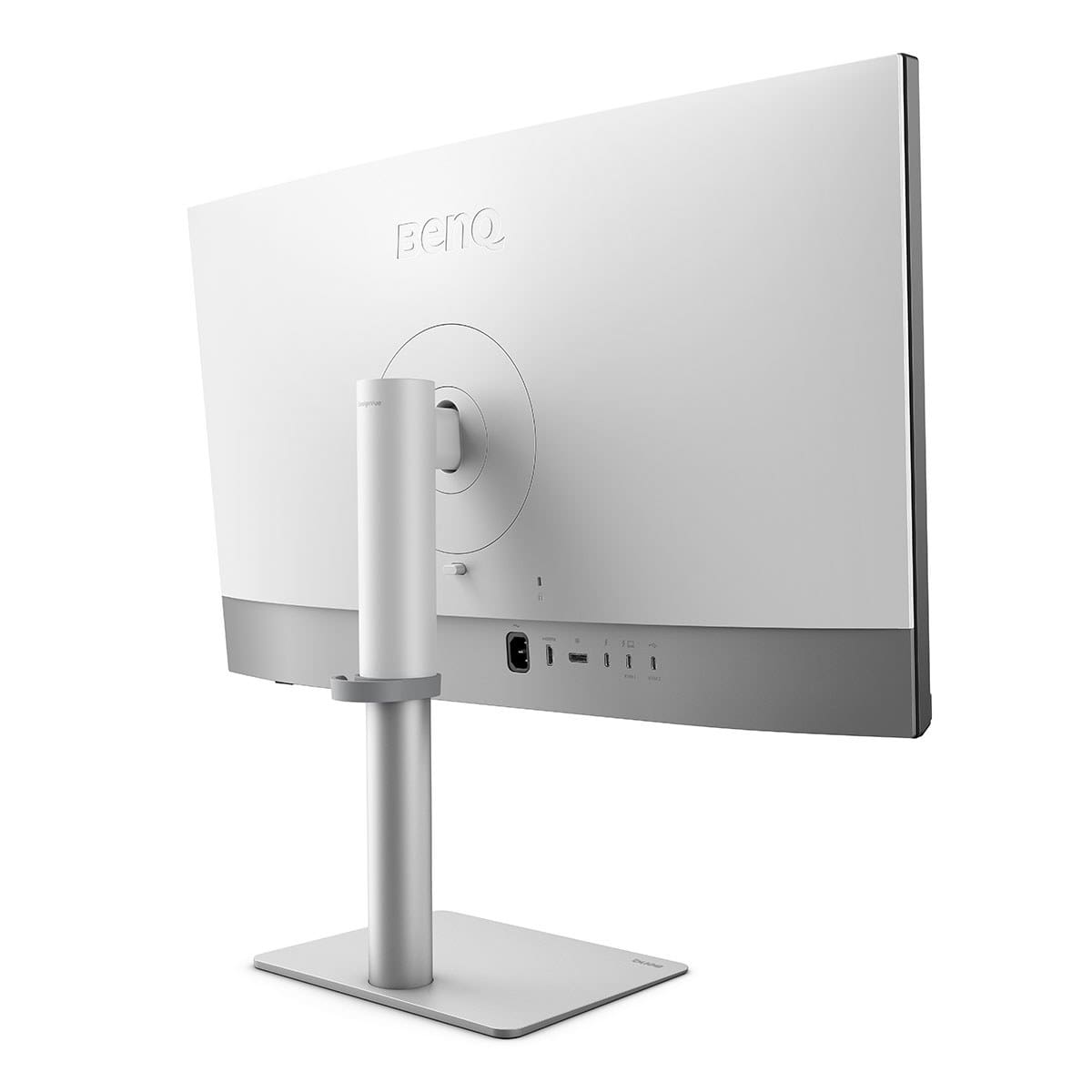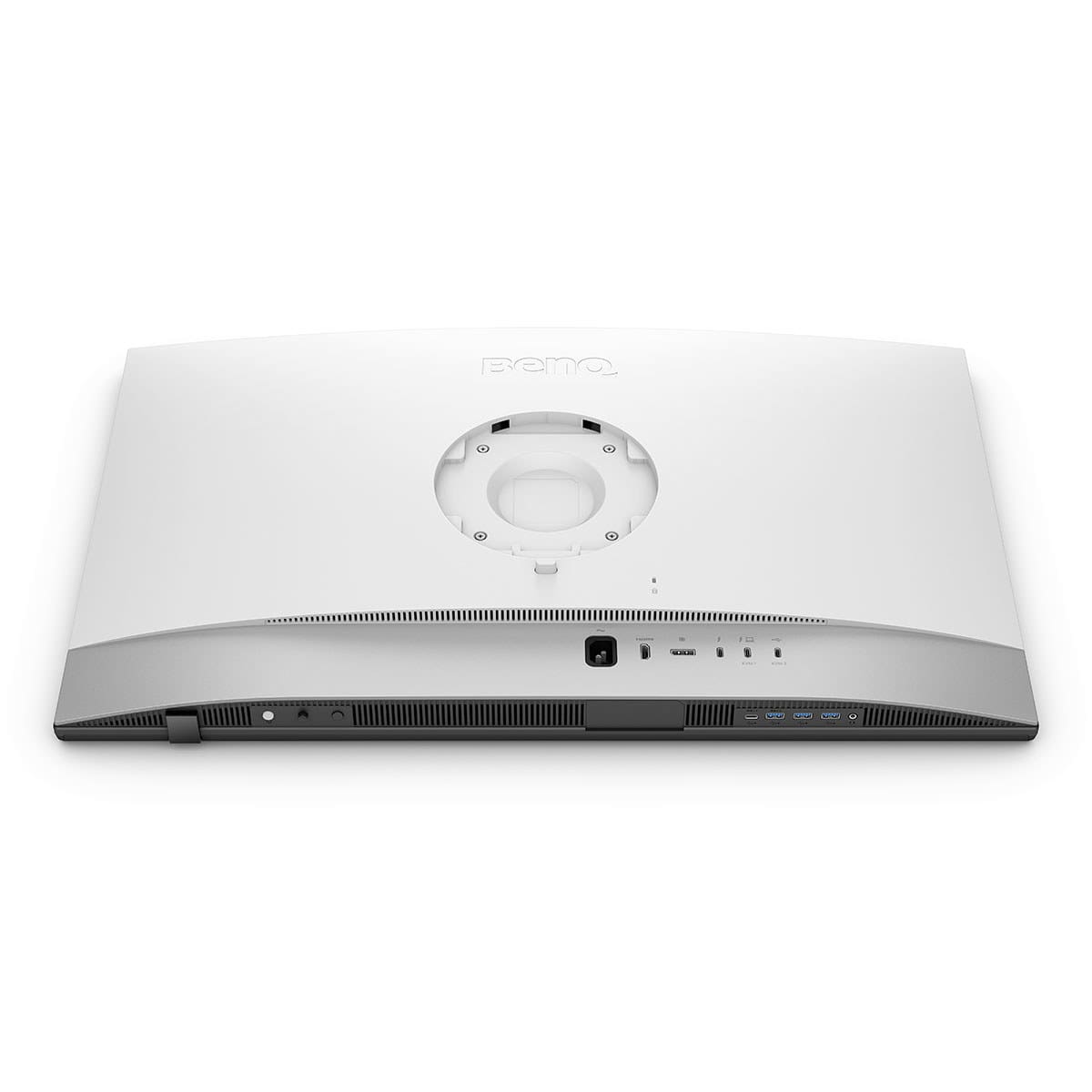BenQ’s newest 32-inch 4K monitor is designed with creative professionals in mind, delivering exceptional image quality thanks to its premium IPS panel. It also features a smooth 144Hz refresh rate and a wide range of connectivity options, making it ideal for design, video editing, and multitasking. However, the steep price tag and minimal HDR performance may give some buyers pause.
One of the most common limitations of high-end monitors built for creative professionals has been the lack of high refresh rate support. BenQ changes that narrative with the introduction of the PD3226G.
This 32-inch 4K display checks all the premium boxes: a stunning IPS panel with exceptional color accuracy, wide color gamut, Pantone validation, and impressive connectivity options. What truly sets it apart is its 144Hz refresh rate—an upgrade from the traditional 60Hz standard in this category.
While higher refresh rates might not be critical for every creative workflow, they’re a game-changer for digital artists using drawing tablets and those who value seamless responsiveness. The smoother performance also enhances everyday computing, making interactions feel quicker and more fluid.
BenQ enhances the experience further with thoughtful extras, such as an intuitive infrared remote puck for streamlined control. These features help the PD3226G stand out as one of the top monitors for creative professionals and business use alike.
That said, the price remains a sticking point. Retailing at just under $1,300 (or £1,100), this monitor is on the expensive side—especially considering it only meets the basic DisplayHDR 400 standard for HDR support.
BenQ PD3226G Review: Design & Features
The BenQ PD3226G stands out with a clean, minimalist aesthetic, highlighted by ultra-thin bezels on three sides of its 32-inch IPS panel. While the bottom bezel is slightly thicker, the overall design remains sleek and professional. It’s built with quality in mind, featuring a sturdy metal stand that offers full ergonomic flexibility, including height, tilt, swivel, and pivot adjustments.
Connectivity is a major strength of the PD3226G. Instead of the usual downward-facing ports, BenQ places the primary I/O flush along the back panel, making it far easier to access power, display, and peripheral connections. Additional ports—including USB-C (data), USB-A hub, and a 3.5mm audio jack—are smartly integrated into the bottom edge of the lower bezel for added convenience.
The monitor includes a rich selection of inputs: DisplayPort 1.4, HDMI 2.0, Thunderbolt 4/USB-C (with 90W Power Delivery), USB-C out, two USB-C ports for data, three USB-A ports, and a 3.5mm audio jack. Thunderbolt 4 compatibility allows for single-cable connectivity with laptops, supporting both display output and device charging. It also enables daisy-chaining a second monitor—though note that compatibility depends on the system; for example, Apple’s M1 and M2 base models only support one external display.
Also included is integrated KVM functionality, letting users connect two computers and control both with a single keyboard and mouse—ideal for multitasking across systems. Enhancing usability further is the third-generation BenQ control puck, now wireless via infrared. Powered by AAA batteries, the puck features a premium metal dial and programmable shortcut buttons for quick access to brightness, volume, contrast, and custom presets.
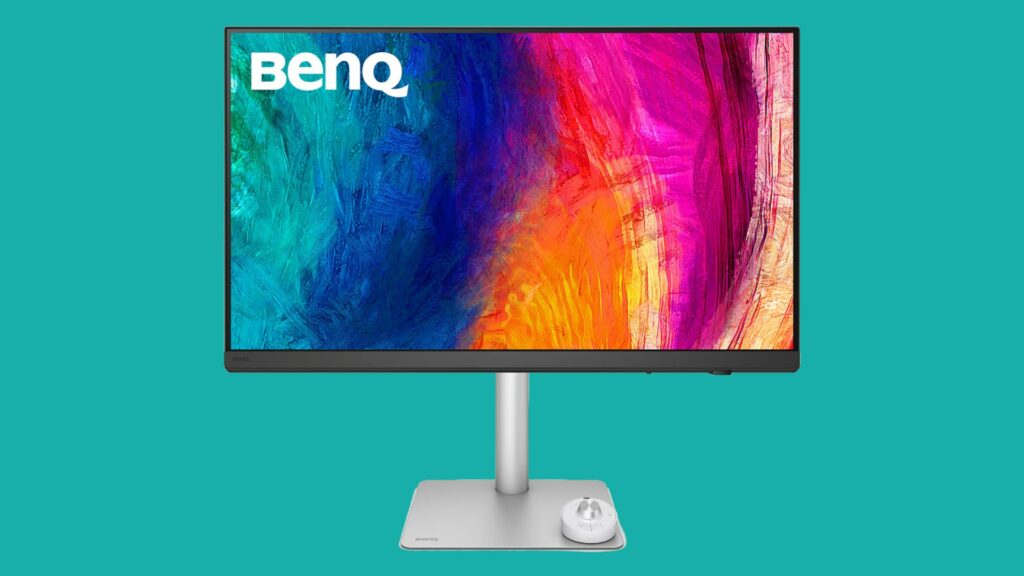
BenQ PD3226G Review: Performance
The BenQ PD3226G offers impressive performance across the board, thanks in part to strong factory calibration and a well-rounded 32-inch IPS panel. Right out of the box, it delivers excellent color accuracy, with Delta E values typically below 2, and covers 95% of the DCI-P3 color gamut—making it a reliable option for creative professionals who prioritize color fidelity.
While this isn’t a true high-end reference display for color grading or advanced video production, it still performs admirably for general creative tasks. The 4K resolution (3840 x 2160) provides ample workspace and crisp visuals, with enough pixel density to ensure sharp text and detailed images—ideal for designers, illustrators, and content creators.
What sets the PD3226G apart from many similarly positioned monitors is its refresh rate. Instead of being limited to the standard 60Hz, this display supports up to 144Hz over both HDMI and DisplayPort—including DisplayPort Alt Mode via Thunderbolt 4. While high refresh rates aren’t essential for photo or video editing, they can enhance responsiveness for digital artists using drawing tablets and improve overall user experience during everyday tasks. Once accustomed to 144Hz, simple actions like scrolling and window dragging feel significantly smoother compared to 60Hz displays.
BenQ includes a robust set of well-tuned color modes, including presets for DCI-P3, sRGB, and M-Book mode. M-Book is intended to emulate the display characteristics of Apple MacBook panels, though the distinction between this mode and the standard P3 profile isn’t entirely clear—both are useful for Mac-based creative workflows.
Further enhancing its professional appeal, the PD3226G is both Pantone Validated and Calman Verified, offering compatibility with advanced calibration tools for users who require precise color management.
However, HDR performance is where the monitor shows its limitations. With only VESA DisplayHDR 400 certification, it lacks advanced features like full-array local dimming and has a peak brightness of just 400 nits. As such, while it supports basic HDR content playback, it doesn’t deliver a true HDR viewing experience. For users working in bright environments or needing high dynamic range accuracy, this may not be the best option.
BenQ PD3226G Review: Verdict
The BenQ PD3226G isn’t just a minor refresh of the brand’s popular creative display lineup—it introduces a few meaningful upgrades that set it apart from its predecessors.
One of the standout enhancements is the jump to a 144Hz refresh rate. While not essential for traditional creative work like photo or video editing, the smoother experience significantly improves general usability. Tasks like scrolling, navigating between apps, and using drawing tablets feel far more responsive. Once you’ve experienced the fluidity of 144Hz, stepping back to 60Hz is a noticeable downgrade.
Another welcome change is the redesigned control puck. Now wireless and operating via infrared, this upgraded remote offers a more ergonomic and clutter-free solution compared to the previous wired version. It enhances day-to-day usability and makes accessing settings far more intuitive—especially once you’ve gotten used to its functionality.
From a creative professional’s perspective, the PD3226G continues to impress with its accurate factory calibration, multiple color space presets (including sRGB, DCI-P3, and M-Book), and consistent 4K image quality. The IPS panel delivers vibrant visuals and ample screen real estate, ideal for design, illustration, and general content creation.
Connectivity is another major strength. With Thunderbolt 4 support, users benefit from fast data transfer, single-cable connectivity, 90W power delivery, and daisy chaining capabilities. Add to that the built-in KVM switch, and the PD3226G becomes a productivity powerhouse for multi-device workflows.
That said, its HDR performance leaves something to be desired. The DisplayHDR 400 rating provides only basic HDR support, lacking features like local dimming or higher brightness levels. For a display in this premium price range, more robust HDR capabilities would have added significant value—especially for users dealing with high dynamic range content.
Still, if HDR isn’t a critical part of your workflow, the PD3226G’s limitations in that area may not be a dealbreaker. Overall, BenQ has delivered a feature-rich, visually stunning monitor that’s highly appealing to creative professionals who value both performance and usability.
